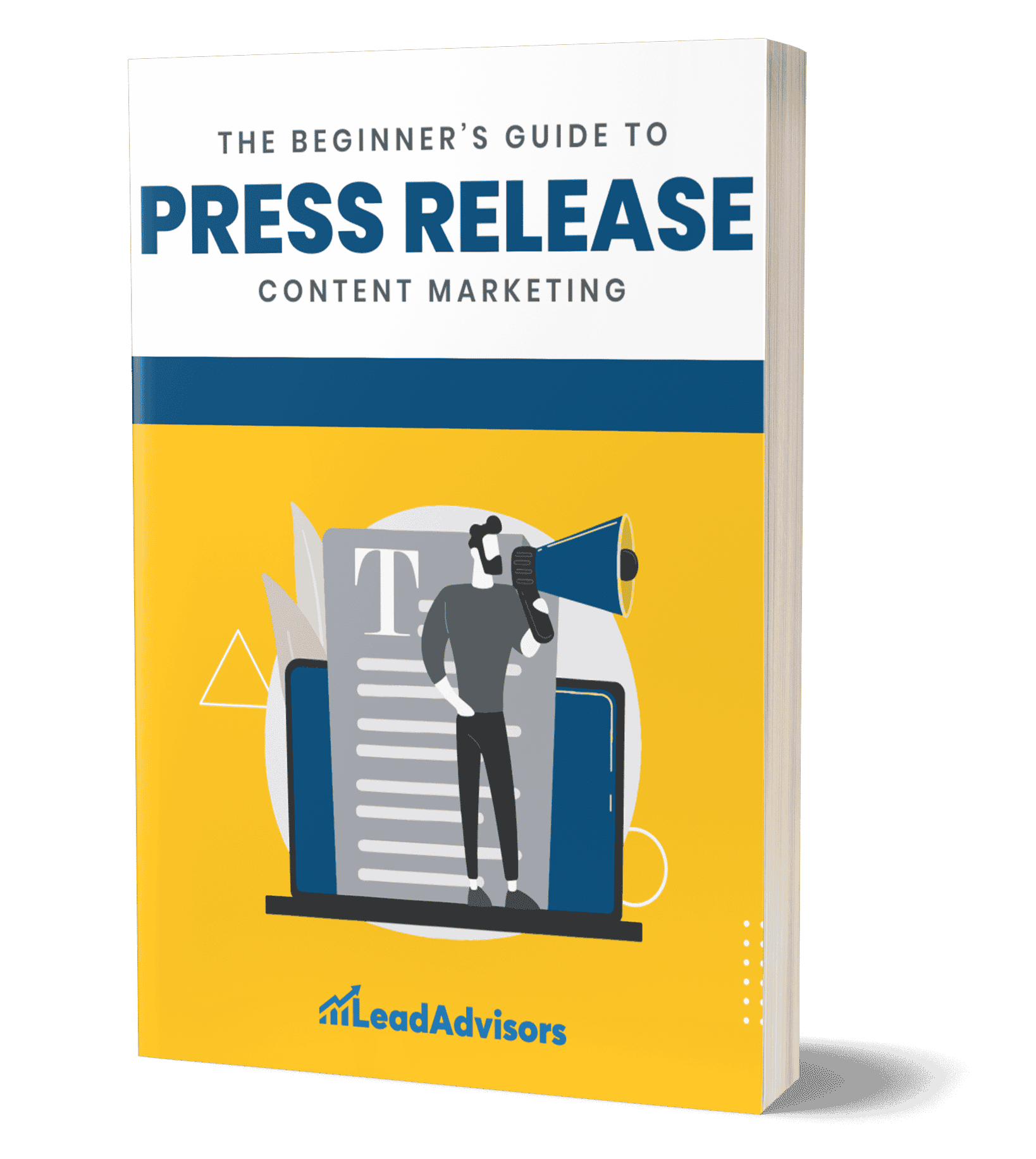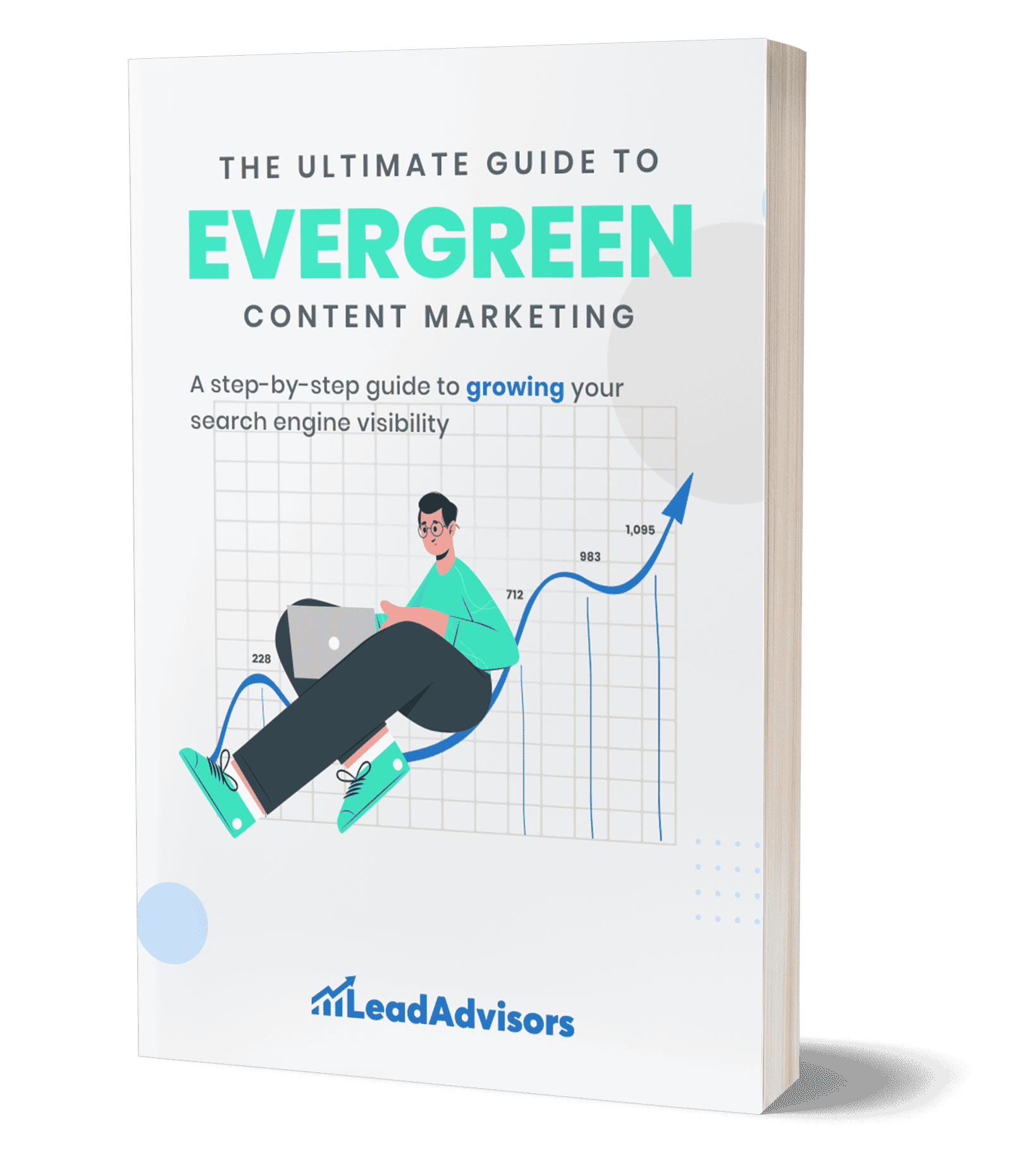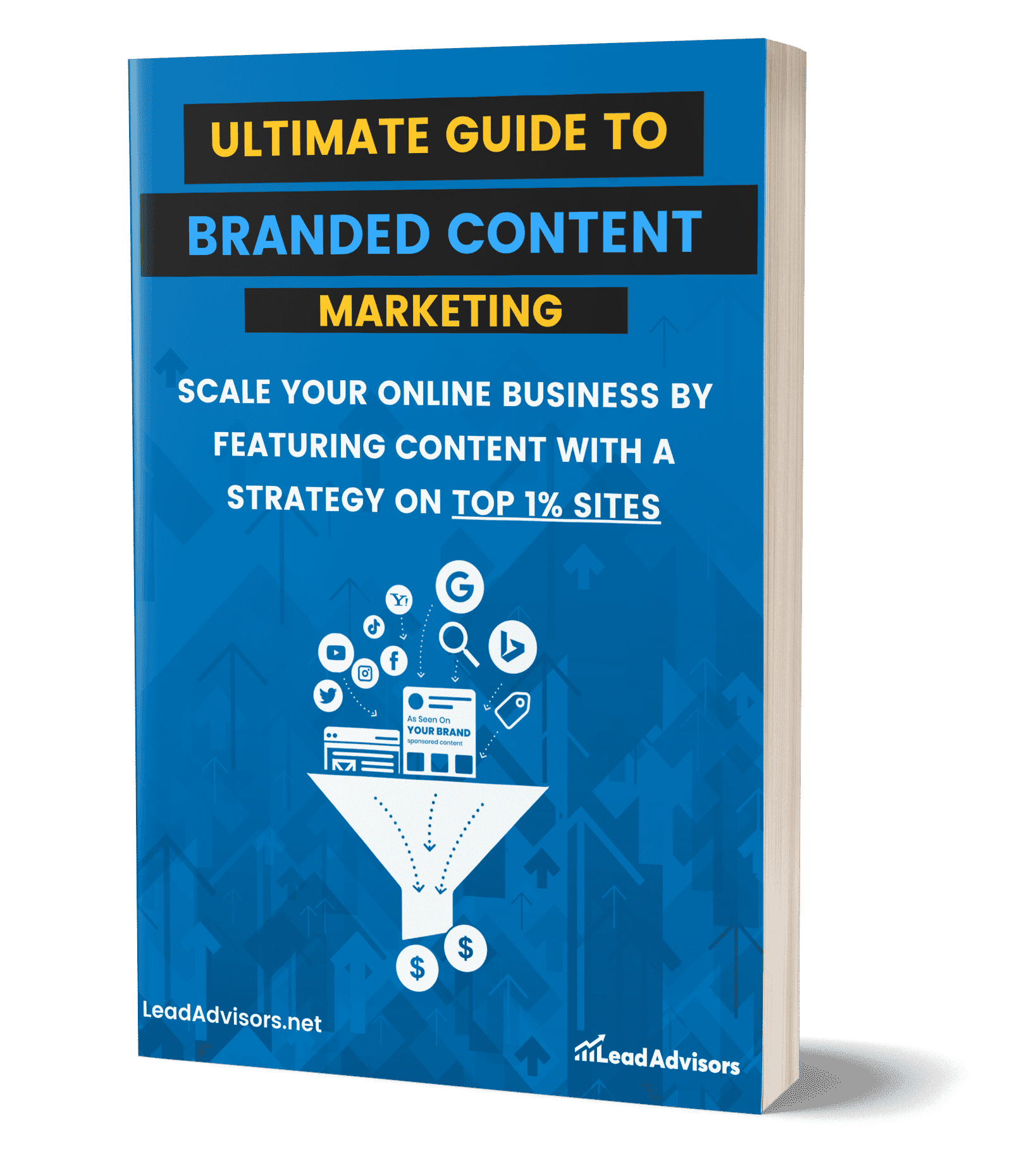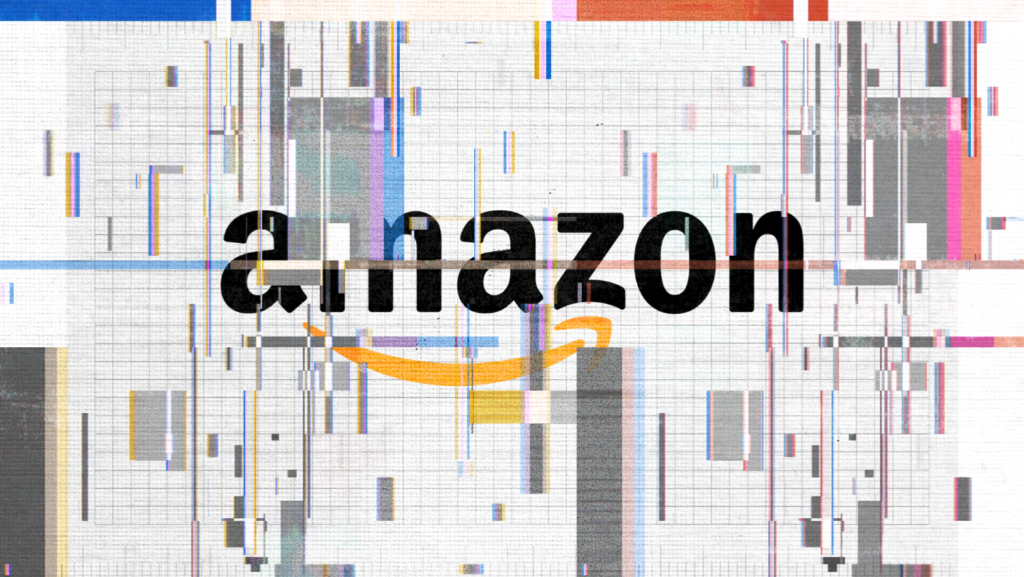Media outreach in 2025 is all about cutting through relentless digital noise to spark genuine connections. Whether you’re a marketer, PR professional, or the founder of a small business, the right outreach can transform your visibility overnight.
With more than 1.1 billion active websites vying for attention, credible press attention provides a decisive edge. When respected media outlets spotlight your story, you don’t just earn clicks – you establish trust, strengthen a positive company image, and anchor your brand at the center of key conversations. In a landscape where consumer faith is hard‑won, a successful media outreach plan doubles as a smart SEO maneuver and a fast track to authority.
This guide walks you through every step of modern media relations: defining goals, zeroing in on the ideal media professionals, and crafting pitches that resonate. You’ll learn how to engage journalists on multiple channels, measure tangible results, and leverage LeadAdvisors’ paid‑media method, our affiliate editorial review strategy, for scalable, high‑impact exposure.
By the end, you’ll be ready to turn strategic outreach into a flow of qualified traffic and sustained engagement. Let’s dive in.
What Is Media Outreach?

Media outreach is the deliberate act of approaching media professionals, editors, bloggers, and influential creators to secure credible coverage for your brand. That exposure might be a news article, product review, podcast segment, or guest post.
For a deeper dive into strategies that help brands break through, check out this guide on how to get media coverage. In short, you borrow the trust and reach of established media outlets to expand your own.
How It Fits into PR & Marketing
Within modern public relations, outreach fuels reputation building. When paired with growth marketing, it accelerates reach, measurable impact, and long‑term authority. Because attention is earned, not bought, it carries an implied endorsement that boosts authority, strengthens your company’s reputation, and supplies high‑quality backlinks for SEO.
Organic vs Paid Outreach
- Organic: You pitch a timely angle, land a feature, and enjoy press coverage because the story is genuinely newsworthy.
- Paid: You sponsor a feature or commission an affiliate editorial review to guarantee placement while still providing useful insight for readers.
A Quick Example
A local bakery shares its zero‑waste packaging story with the city paper and earns a feel‑good profile (organic). Ahead of the holidays, the same bakery partners with a leading food blog for a sponsored deep dive on its seasonal menu (paid). Together, these placements amplify reach, deliver SEO benefits, and keep the brand top of mind.
Effective outreach hinges on building relations. Offer journalists relevant, timely information, and they’ll amplify your message to audiences you couldn’t reach alone.
Why Media Outreach Is Critical for Your Brand

Strategic outreach delivers far more than a vanity headline. When executed with care, it multiplies search visibility, brand trust, and long‑term visibility. It also reinforces online reputation management, ensuring your brand presence remains positive and consistent across channels.
1 | Authority and Search Performance
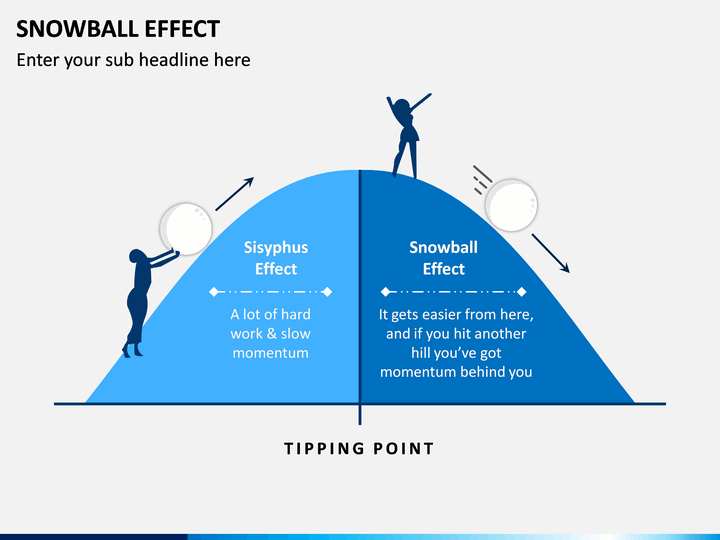
A single link from a respected news site signals to search engines that your pages deserve higher placement. One strong feature often inspires secondary write‑ups on smaller blogs, creating a snowball of backlinks and brand mentions that elevate organic rankings over time.
2 | Credibility That Converts

Buyers believe third‑party stories more than paid promotions. When an established publication reviews or highlights your solution, their endorsement shortens the decision cycle and raises conversion rates. It works like digital word‑of‑mouth: people see trusted journalists vouching for you and feel comfortable taking the next step.
Core Elements of a Successful Media Outreach Plan
Successful outreach begins long before the first email lands in an editor’s inbox. Five foundational steps keep your efforts focused, measurable, and genuinely valuable to both journalists and readers.
Set SMART Goals – Define what success looks like in concrete terms. Instead of a vague hope for “more buzz,” aim for specifics such as five mentions on industry blogs this quarter or a 20 percent rise in referral traffic from news sites within 60 days.

Clear, time‑bound targets allow you to track progress and align outreach with wider business objectives.
Know Your Target Audience – Identify who you want to influence: potential customers, investors, or a niche community. Research the publications, podcasts, and social channels they trust, then prioritize outlets that reach those same readers or listeners. When a story appears where your audience already spends time, it resonates and converts far better than a scattershot approach.
Build a Focused Media List – Quality trumps quantity. Compile a concise roster of journalists, editors, and bloggers whose beats match your angle. Tools such as Muck Rack, Cision, or Google News searches help surface up‑to‑date contact info, but always verify each person’s recent work before adding them.

A tight media list ensures every pitch feels personal rather than mass‑generated.
Shape Clear Messages and Angles – Decide what makes your news compelling. It could be breakthrough data, an inspiring founder story, or a fresh take on a hot trend. Strong brand positioning ensures those angles resonate consistently across every media mention. Distill two or three strong angles and the key points you want every reader to remember. Consistency keeps coverage on‑message, no matter which outlet runs the piece.
Personalize and Nurture Relationships – Outreach is ultimately human. Reference a journalist’s recent article, engage with their social posts, and offer helpful background, long before you ask for coverage. This early investment in building relationships pays off in faster replies, richer stories, and repeat opportunities over time.
Solidify these five elements, and you’ll move forward with a roadmap that transforms outreach from guesswork into a repeatable growth engine.
Crafting the Perfect Media Pitch

A strong media pitch is your best chance to cut through a crowded inbox. Treat it like a miniature story – compelling, concise, and tailored to one specific journalist.
- Keep it concise and newsworthy
Journalists skim fast. Hook them in the opening line with the most interesting detail – new data, a milestone, or a timely angle. In two short paragraphs, cover the who, what, when, where, and why their target audience should care. - Personalize every message
No mass blasts. Address the reporter by name and reference something they recently wrote to show relevance. A custom line proves the pitch isn’t a generic template. - Write an eye‑catching subject line
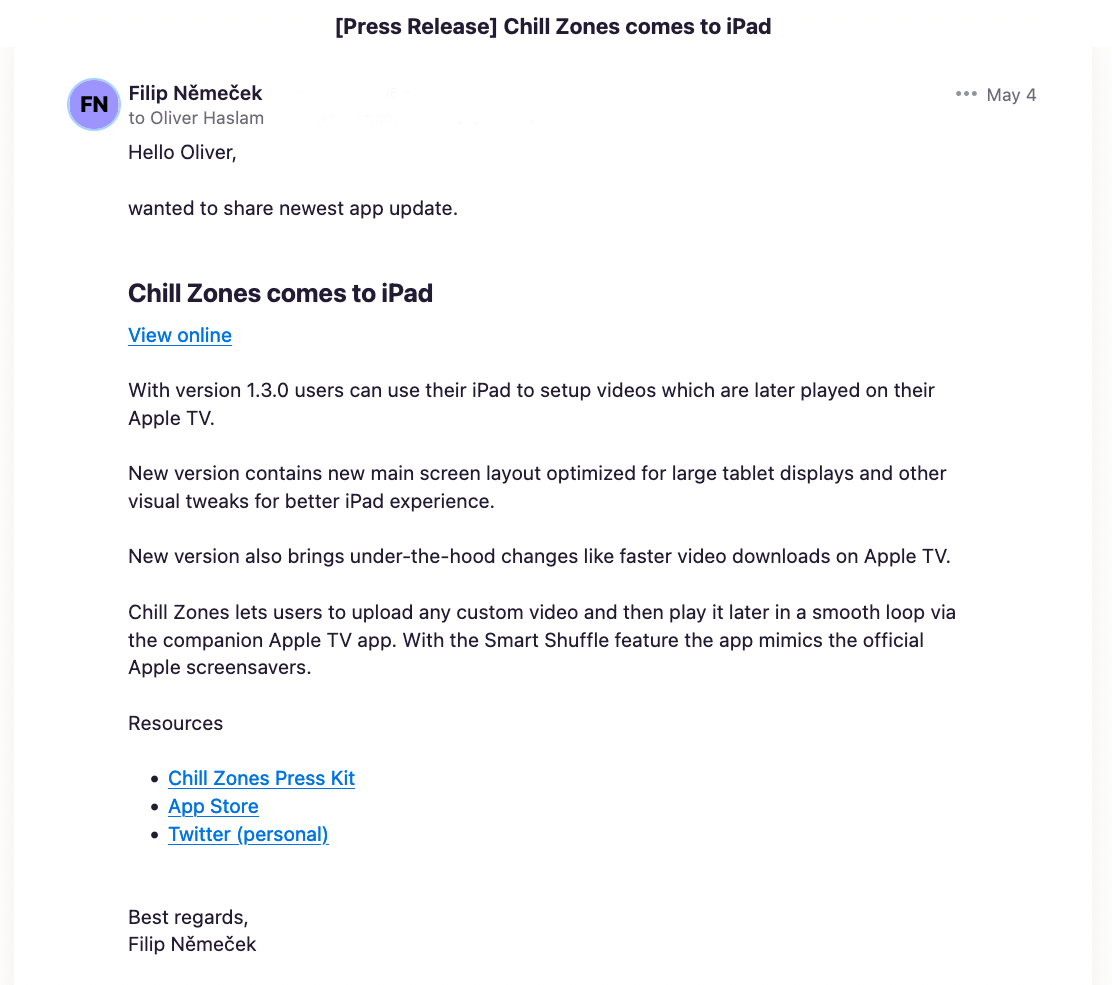
Aim for under 60 characters, free of clickbait. Summarize the core benefit or stat, e.g., “Local startup cuts food waste 40 % with AI”. If you attach a press release, prefix it with “Press Release:” only when it adds clarity.
- Include key details – nothing more
One sentence of company context, a telling stat, and an offer: an interview, demo link, or high‑resolution image. Link to a press kit so the inbox stays uncluttered. - Add a human touch
Let your brand voice shine through a friendly but professional tone. Replace hype words with proof (growth numbers, testimonials). A short narrative or founder anecdote can help the report stick. - Leverage multimedia wisely
Embed a thumbnail image or hyperlink to a 30‑second exposure product clip – never huge attachments. Visuals help editors picture the report and save them production time. - End with a clear call‑to‑action
Ask for what you need – an interview, product test, or event attendance – and make it easy to say yes by listing direct contact information and scheduling flexibility.
Master these steps, and each email will turn into an effective pitch. You will show respect for a reporter’s time while spotlighting a story worth sharing.
Pro Corner: 5 Media Outreach Tips
Need a quick refresher? Here are a few tips that top communicators rely on:
- Build rapport weeks before you pitch – comment on a reporter’s social posts.
- Open with data, not adjectives, to join the sea of online outreach tips with something fresh.
- Keep a living sheet of contact information that every teammate can access.
- Tap your extensive network for third‑party stats to strengthen quotes.
- Send follow‑up summaries to different outlets to fit their angles while chasing the same story.
Timing, Follow‑Ups & Building Relationships with Media Professionals
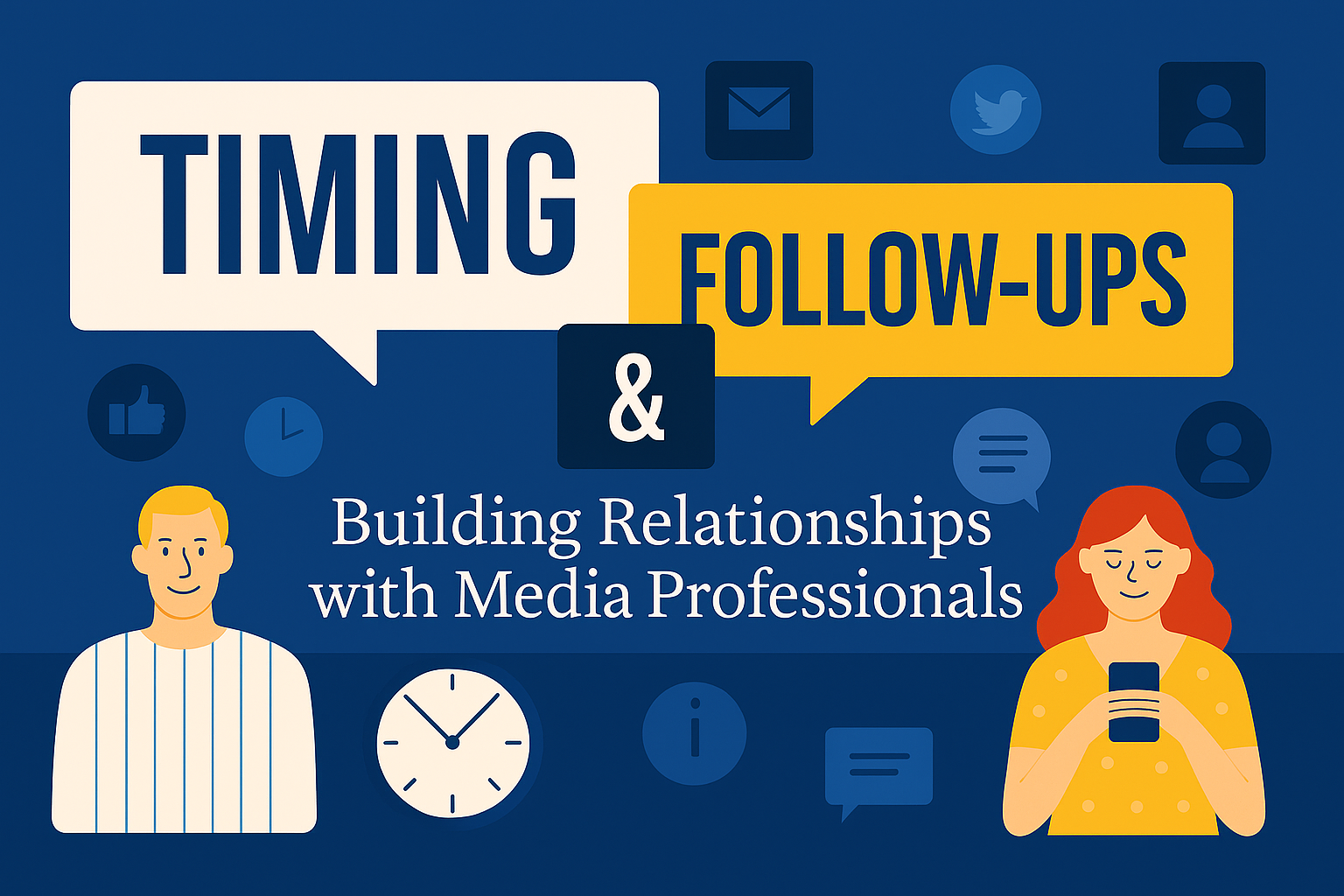
A well‑timed, well‑mannered follow‑up can turn a quiet inbox into confirmed press coverage. Use these five habits to keep reporters receptive and to transform one‑off wins into long‑term relationships.
1 | Send at the right moment
- Mid‑week, mid‑morning (Tue – Thu, 8–11 a.m. local) catches journalists between meetings and before deadline crunch.
- Pitch seasonal or trend pieces several weeks ahead, breaking news within the hour.
- Respect time zones – 9 a.m. for them, not for you.
2 | Follow up – politely and sparingly
- Wait three business days, then send one short reminder.
- A second nudge a week later is the limit unless the reporter engages.
- Never chase with daily emails or surprise calls; it erodes trust.
3 | Be ready the moment they say yes
- Keep a press kit: high‑res images, data sheets, executive bios, and quotes.
- Respond the same day; missed deadlines equal missed stories.
4 | Invest in ongoing value
- Share their articles, offer fresh stats, or connect them with expert sources – even when the news isn’t about you.
- Send occasional “thought you might find this useful” notes with no ask attached.
5 | Meet in real life (or live video)
- Industry events, press breakfasts, or a quick virtual briefing help put a face to the name.
- Genuine rapport leads to repeat requests for insight and faster turnaround on future pitches.
Master these practices, and your outreach evolves from single placements to a sustainable network business of media allies.
Common Outreach Mistakes (and How to Avoid Them)
| Mistake | How to Fix It |
| Generic or irrelevant pitches | Research each reporter’s beat and open with a detail that proves relevance. Quality over quantity wins every time. |
| Message overload | Keep the first email under 150 words and limit follow‑ups to two polite nudges a few days apart. |
| Thin news value | Lead with a data point, timely trend, or human‑interest hook – not promotional fluff. |
| Sloppy press material | Front‑load who/what/why in a clear headline and link to a tidy asset kit instead of bulky attachments. |
| Tone misfires & typos | Spell names correctly, read the email aloud for flow, and balance friendly language with professionalism. |
| Giving up too soon | Treat a “no” or silence as feedback. Refine the angle, keep nurturing contacts, and re‑pitch when you have stronger news. |
Avoiding these pitfalls keeps your media pitches in reporters’ good graces and your outreach on the shortlist of trusted sources.
Modern Channels & Tactics for Media Outlets Outreach
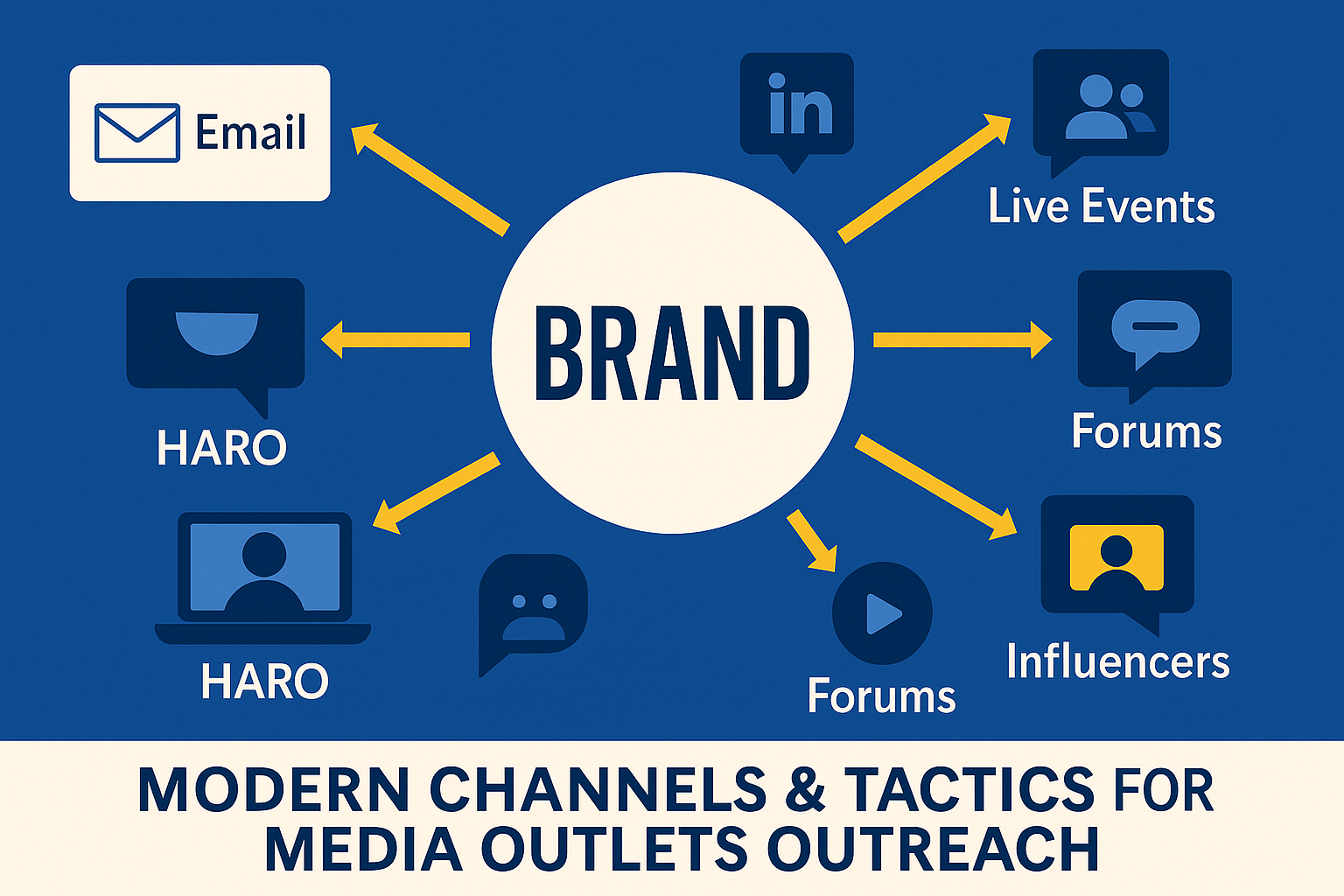
A well‑rounded strategy meets journalists where they already spend time – both online and offline. Pair classic email with these complementary channels to widen reach and humanise your approach.
Email: Still the Workhorse

Personalised, well‑timed messages remain journalists’ preferred touchpoint. Track opens or link clicks (HubSpot, Yesware) to guide follow‑ups, and use clear embargo labels when sharing time‑sensitive news.
Social Platforms: Listen, Engage, Then Pitch
- X / Twitter – Monitor calls for sources and jump in with concise replies or DMs after prior interaction.
- LinkedIn – Comment thoughtfully on a reporter’s posts; request permission before sending a longer idea via InMail or voice note.
- HARO / Qwoted – Respond to open queries to earn quick bylines and backlinks without cold pitching.
Wire & Distribution Services

Newswires (PR Newswire, Business Wire) ensure broad syndication for major announcements. Combine a wire drop with hand‑crafted emails to key writers for a balance of scale and personal touch.
Events and Live Briefings
Invite the press to virtual demos, trade‑show booth tours, or small breakfast roundtables. Face‑to‑face or camera-to-camera interaction builds rapport faster than any inbox thread.
Influencer & Creator Partnerships

Bloggers, podcasters, and niche YouTubers are trusted in communication and specialised communities. Offer exclusive access, product trials, or collaborative content, and be upfront about any sponsorship terms.
Communities & Forums

Active participation in Reddit, Quora, or Slack groups positions you as a resource. Valuable, non‑promotional insights can attract news writers hunting for expert quotes.
Blend these channels around one consistent story, and you’ll create a surround‑sound effect that amplifies every mention, share, and link.
Affiliate Editorial Reviews – LeadAdvisors’ Modern Outreach Edge

Traditional news hits are powerful, but affiliate editorial reviews give your brand a double boost – credible third‑party praise and purchase‑ready traffic. For a step‑by‑step breakdown, see our ultimate guide to brand editorial reviews.
LeadAdvisors pioneered this hybrid of PR and performance marketing, placing products inside expert‑written listicles and reviews on high‑authority publications.
What Makes Affiliate Editorial Reviews Different?
- Editorial integrity – Articles are crafted by professional writers on respected sites, not anonymous user comments.
- First page on Google – You keep the content evergreen and well‑ranked in Google.
- Rich comparisons – Pieces often position your offering alongside peers, highlighting unique benefits and nudging readers toward a decision.
How LeadAdvisors Executes the Strategy
- Target high‑authority outlets – We match your product with sites whose domain authority and audience fit your goals, from national news portals to niche blogs.
- Pitch inclusion – Our team collaborates with editors, supplying angles, data, and assets so your brand appears in gift guides, “best of” round‑ups, or standalone reviews.
- Optimise for SEO – Because these publishers monetise via affiliate links, they naturally optimise headlines and copy for search terms – your brand benefits from their ranking power.
- Track and refine – We monitor traffic, conversions, and ranking position, fine‑tuning future placements or requesting content updates when you launch new features.
Why It Works
| Benefit | Impact |
| Borrowed authority | Readers trust recommendations on outlets they already follow, boosting click‑through and conversion rates. |
| High‑quality backlinks | Links from DA‑rich sites strengthen your own search authority. |
| Evergreen visibility | “Best products” articles keep ranking for months – or years – driving sustained referral traffic. |
| Scalable reach | Multiple placements stack, surrounding prospects with consistent, positive messages. |
- Launching a new product that needs immediate, trusted exposure.
- Standing out in a crowded niche by appearing in “top” lists on page one of Google.
- Supplementing organic PR with predictable, ROI‑driven coverage.
LeadAdvisors manages the entire process – from outreach and negotiation to performance tracking – so your team reaps the rewards without the legwork.
Tools & Platforms to Supercharge Your Outreach
PR outreach platforms equip public relations professionals with the contact details they need to tap a broad network of writers across various outlets, accelerating campaign setup.
Managing outreach means juggling leads, emails, follow‑ups, and monitoring. The right stack trims busywork so you can focus on strategy.
Must‑Have Outreach Toolkit
Media‑contact platforms like Muck Rack, Cision, and Prowly keep your contact information current and automate follow‑ups, while free staples such as Google Alerts track fresh press coverage. Add Grammarly for spotless copy, HARO for reactive leads, and a lightweight CRM (a shared Google Sheet works) to tie everything together. This slim stack meets the needs of public relations specialists at small businesses without bloating budgets.
Pro tip: Tools streamline the process, but human insight – researching beats, crafting stories, building relationships – still drives results.
Measure Media Coverage & Communicate Success
A data‑driven review turns anecdotal wins into proof of ROI. Match KPIs to your original SMART goals, then share results in a dashboard that stakeholders can grasp at a glance.
1. Media‑Coverage Metrics
- Total placements – Count articles, podcasts, and TV clips; break them down by channel and tier.
- Quality & sentiment – Flag top‑tier hits and note whether coverage is positive, neutral, or negative.
- Share of voice – Your mentions vs. competitors across the news cycle.
- Authoritative backlinks – Use Ahrefs or Moz to track new referring domains from coverage.
2. Website Traffic & Engagement
- Referral sessions – Visits arriving from each outlet; annotate spikes next to publication dates.
- Goal completions – Trials, sign‑ups, or sales that stem from press traffic (use UTM links or dedicated landing pages).
- Branded‑search lift – Increases in direct searches for your company after major hits.
3. SEO & Visibility
- Keyword rankings – Track priority terms for which your site, or the article covering you, moves up.
- Domain Authority / Rating – Watch for gradual climbs as quality links accrue.
- SERP real estate – Count page‑one results featuring your brand (site or third‑party stories).
4. Journalist Engagement
- Response rate – Replies divided by total pitches sent; iterate if below target.
- Warm leads gained – Reporters who invite future ideas or follow your brand on social.
5. Long‑Term Business Impact
- Revenue influence – Correlate press waves with sales or pipeline growth.
- Inbound media requests – Track unsolicited inquiries as a sign of rising authority.
- Reputation lift – Survey scores or review‑site ratings before vs. after a campaign.
Tip: Highlight one headline, one quote, and one key metric per campaign slide – busy execs remember stories, not spreadsheets.
Outreach Checklist & Resources
Below is a quick‑scan reference packed with practical media outreach tips and proven strategies that small teams or global brands can use to gain broad coverage on any particular topic.
Essential Items Before You Hit Send
- The press release was drafted and proofread by two public relations specialists – one for accuracy and one for engaging writing style.
- A concise summary for email plus a multimedia‑rich virtual press kit created on your preferred online platforms (Google Drive, Dropbox, or newsroom CMS). Include updated contact details, executive bios, and product photos.
- Cross-check the spelling of each person on your list and confirm that their beat truly matches your pitch.
- Internal cheat‑sheet of talking points so every spokesperson shares the same important information and brand messaging.
Relationship‑First Communication
- Practice empathetic communication – ask reporters how they prefer to be contacted and store those notes in your CRM.
- Leverage your broad network to introduce journalists to additional expert clients when a story falls outside your wheelhouse. This goodwill strengthens ongoing media relations.
- Keep track of read receipts; if a reporter seems interested but busy, a single courteous nudge can reignite the conversation. Building long-term relationships through small touchpoints is part of what makes a successful blog outreach strategy work in digital PR as well.
Multi‑Channel Promotion Plan
| Step | Channel | Action |
| 1 | Personalised pitch + hyperlink to press kit | |
| 2 | Social | DM on LinkedIn or X to promote key data visual |
| 3 | Events | Offer a 1‑to‑1 demo at an industry technology showcase |
| 4 | Wire | Distribute the same press release for wider pickup |
| 5 | Follow‑up | Share additional angles with multiple outlets to broaden reach |
A well-balanced promotion strategy not only distributes your pitch across relevant channels but also reinforces your brand message. Consider how cohesive social media branding across platforms supports trust and engagement with media.
With these checklists, you’ll maintain airtight media relations, deliver value to journalists, and ensure every outreach wave serves your long‑term brand goals.
Small‑Business Edge & Media Matrix
Small businesses often wonder how to scale media outreach without enormous budgets. The answer is disciplined media outreach routines blended with repeatable pr outreach frameworks.
Media outreach habit checklist
- Schedule a weekly media outreach sprint that pairs research with tailored emails.
- Map each media outreach angle to one clear KPI so you can link press coverage to revenue and prove pr outreach ROI.
- Sync media outreach calendars with quarterly pr outreach milestones to keep momentum high.
- Log every media outreach interaction in your CRM to deepen media relations and support data‑driven pr outreach decisions.
- Use cloud technology to store visuals and provide instant contact information when reporters ask in your media outreach thread.
- Survey satisfied clients monthly – great testimonials fuel the next wave of media outreach and enrich relationship‑based media relations.
Documenting each experiment builds a searchable knowledge base that any team member can access. For brands that prioritize consistency, even a simple content production process ensures campaigns run smoothly and outreach material stays aligned.
This disciplined approach helped one SaaS company earn additional media coverage on three high‑authority media outlets. The company earned media coverage on three high‑authority media outlets. Another company in sustainable technology used the same pr outreach framework to showcase happy clients; the result was fresh media coverage in top industry publications and a surge of inbound interest.
The same PR outreach framework was used to showcase happy clients; the result was five glowing articles and a surge of inbound interest.
Media Outreach Trends to Watch in 2025
Staying ahead of shifting habits – from crafting the perfect subject line to monitoring new platforms – keeps your outreach fresh and effective. Here are the key developments shaping PR and media engagement this year:
Hyper‑Personalisation Becomes Standard
Journalists expect pitches that reference their specific beat and recent work. Blanket blasts risk instant deletion – or a blacklist. Segment lists finely and tailor each note to the reporter’s audience and style.
Multimedia‑Rich Press Kits
High‑resolution images, short video clips, and embeddable graphics now travel with every press release. Visual assets make stories easier to publish and more engaging for readers, increasing pickup rates. This trend aligns with how brands are optimizing every visual touchpoint, from email headers to footer design, for trust and engagement.
Press Releases, Reinvented
Far from obsolete, releases remain a newsroom staple when they read like concise stories: clear hook, compelling data, ready‑to‑lift quotes, and skimmable formatting. Many brands host releases in their own newsrooms, then pitch the link for richer analytics.
AI‑Assisted – but Human‑Refined – PR
Tools draft first‑pass copy, predict open times, and surface relevant networks. Communicators still validate facts, inject nuance, and ensure authenticity so pitches don’t feel robotic.
Rise of Niche Voices
Micro‑publications, newsletters, and specialized podcasts wield outsized influence in tight communities. Securing a thoughtful mention here can drive more conversions than a brief note in a national outlet. That’s why many businesses create cornerstone content to serve as reference material for media across niche segments.
PR + SEO Convergence
Digital PR teams track backlink quality and keyword gains alongside traditional metrics. Outreach often launches in tandem with data studies or infographics designed for citation and authority. These blended campaigns benefit from practices like keyword mapping to align outreach angles with search visibility goals.
Brand‑Owned Storytelling
Companies publish insight reports, founder blogs, and social‑first videos that journalists then quote. Creating newsroom‑worthy content in‑house attracts inbound coverage without a pitch.
Relationship‑First Approach
With shrinking newsrooms, trustworthy sources are gold. Short intro emails, fast fact‑checks, and respect for embargoes build a reputation that keeps writers coming back. Teams that consistently optimize their on-page presence tend to back up their credibility with solid digital experience, which reporters appreciate.
Choosing the right PR outreach approach to promote your story on a particular topic ensures you gain coverage quickly, even as channels shift.
Frequently Asked Questions
How do I handle media rejections professionally?
Should I pitch the same story to multiple outlets?
What if I don’t have a newsworthy story yet?
How long should I wait before repitching a reporter?
Can small businesses succeed with media outreach without an agency?
Amplify Your Reach with Strategic Media Outreach
In today’s crowded digital world, effective media outreach is the reliable lever for boosting traffic, engagement, and long‑term brand growth. When you secure coverage on trusted media outlets, you borrow their credibility while earning high‑value backlinks – an unbeatable combo of PR and SEO upside.
Media outreach and media relations aren’t a one-off burst; they’re a compounding asset. Each mention, backlink, and journalist relationship becomes a brick in your brand’s authority wall. Start small if you must – one press release, five personalized emails, a coffee chat with a local reporter. Even building momentum from a well-crafted content calendar can help keep your efforts structured and consistent. Then iterate, measure, and expand.
If you’d rather accelerate results and skip the trial‑and‑error phase, lean on the experts. LeadAdvisors crafts outreach campaigns that land headlines, backlinks, and high‑intent traffic fast. From story ideation to pitch delivery and performance tracking, we handle every step so you can focus on running your business.
Ready to unlock the power of media outreach? Contact LeadAdvisors for a tailored game plan that lifts your traffic, engagement, and brand authority to new heights.



